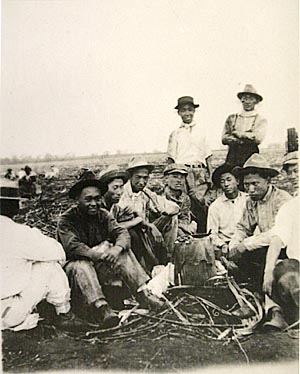A shortage of laborers to work in the growing (in size and number) sugar plantations became a challenge. The only answer was imported labor.
Starting in the 1850s, when the Hawaiian Legislature passed “An Act for the Governance of Masters and Servants,” a section of which provided the legal basis for contract-labor system, labor shortages were eased by bringing in contract workers from Asia, Europe and North America.
In 1882, the United States and Korea signed a formal trade agreement. Under provisions of the treaty, Koreans were able to travel to, reside and study in, and trade with the US.
Although they had a signed trade agreement, there was little activity between the two countries. That changed moving into the early-1900s – the first of several waves of Korean immigration started in 1903.
Korean immigration to Hawaii can be compared to ocean waves and there have been four waves of Korean immigrants.
Between 1903 and 1905, the first wave brought nearly 8,000 Koreans to Hawaiian shores. The January 13, 1903 edition of the ‘Evening Bulletin’ (forerunner of the Star-Bulletin) reported, “The Korean immigrants who arrived this morning are an experimental case. If these workers prove to be good workers and possess a kind and courteous attitude, it is evident that more Koreans will be arriving here aboard the ships from the Orient in the future.”
By April 1905, 65-ships brought 7,843 Koreans to Hawai‘i – 6,701 men, 677 women and 465 juveniles (under the age of 14.) Men out numbered women, 10 to 1.
Most of the early immigrants were young men about 20-years of age. Since sugar plantations wanted to import farm workers, prospective immigrants listed their occupation as farmers in their immigration applications; however, only one-seventh of the Korean immigrants had actually been farmers.
Most had dreams of making a fortune and then returning to Korea to get married. However, for many, there was no country to go back to.
In the 1894-1895, then in 1904-1905, two wars broke out around the Korean Peninsula – Sino-Japanese and Russo-Japanese, respectively. Japan took over financial and diplomatic powers from the Koreans in 1905.
Eventually, Japan assumed absolute governance of the Korean Peninsula and, finally, in 1910, annexed Korea.
Back in Hawai‘i, the young immigrants soon became middle-aged and many remained bachelors. Preferring to marry Korean brides, a decision was made to import brides from Korea.
This started the second wave of immigration, dominated by “picture brides.” 951 young picture brides journeyed to Hawai‘i; they were greeted by the nearly 5,000 Korean bachelors eagerly looking to get married.
The third wave of Korean immigration to Hawai‘i was during the post-war period of 1947-1967. This included students, “War Brides” (also known as “Peace Brides”) and war orphans.
These early students became leaders upon returning home after Korea was liberated from Japan as the Republic of Korea in 1948. The War Brides married GIs while American soldiers were stationed in Korea.
The final wave of Korean immigration, starting around 1967, included immigrants from a broad range of occupations, unlike the initial job-specific focus. Many well-educated people moved to Hawai‘i and the continent who were entrepreneurs, doctors, investors and other professionals.
According to recent population data for Hawaiʻi, of the approximate 1.4-million Hawaiʻi residents, nearly 50,000 are Korean. Many are the descendants of these early immigrants to Hawaiʻi.


























